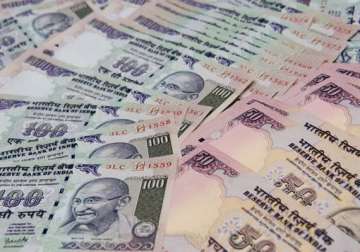Mumbai: India's Current Account Deficit is likely to narrow during 9 months (July-March) of the current fiscal to touch a low of 1.5 per cent of GDP because of lower gold imports, higher overall exports and a drop in imports due to tapering domestic demand, analysts say.
“CAD will be less than USD 10 billion in Q2 (July- September), which will be 1.5-1.7 per cent of GDP, and for the whole year we maintain that CAD will be around 3.8 per cent of GDP or USD 67-68 billion,” a State Bank research report said today.
CAD, which indicates imports of goods services and transfer are higher than their exports, widened to 4.9 per cent of GDP, or USD 21.8 billion, in Q1 of FY14 as against 4 per cent of GDP, or USD 16.9 billion, in the year-ago quarter.
Widening of Q1 CAD was on account of rise in imports by 4.7 per cent and decline in exports by 1.5 per cent.
“The current account gap will exhibit an improvement in the coming quarters due to the curbs on gold imports, a weak rupee benefiting exports and a sharp slowdown in domestic demand pulling down consumption and investment good imports.” credit rating agency Crisil said.
During July-August, exports grew 12.3 per cent, while imports fell 3.6 per cent, Crisil noted. Gold imports have already come down with July-August figure nearly 300 tonne lower over the first quarter, it said.
“Nonetheless, indications are that the CAD shortfall has peaked and is poised to witness some improvement here on,” DBS Bank said in a report.
Analysts felt exports are likely to pick up as the US economy is expected to grow at 1.7 per cent and there are signs of improvement in the European Union.
“An increase in exports would be further aided by the recent rupee fall, which has enhanced export competitiveness of India's goods and services,” India Ratings said.
Crisil said narrowing CAD and higher capital inflows in the second half of the fiscal will help stabilise the rupee.
“In the second half of the fiscal further easing of CAD and some pick-up in capital inflows - if the RBI and Government's measures at bringing in foreign capital yields fruit - could stabilise the rupee.”
The rupee fell to a life-time low of 68.85 against the US dollar on August 28. However, it has recovered more than 10 per cent in September.
Measures announced by RBI and the Government such as foreign borrowings of state-owned financial institutions and public sector oil companies, and steps to attract non-resident deposits would help garner USD 11 billion, the analysts said.
Crisil said, however, that the nature of improvement in CAD would be unsustainable as bulk of correction is from gold imports, which is forceful due to curbs, and from other non-oil imports which drop with weak domestic demand.
“As and when the curbs on gold import are gradually withdrawn, import demand could escalate once again unless alternate investment instruments offering positive real returns are available. Also as the economy recovers, investment and consumption goods imports will pick-up.”
The rating agency said it is imperative to find a more durable path for both reducing the CAD through encouraging exports, and also financing it.
“Unless structural policy changes that improve growth prospects are adopted, any improvement in capital inflows will only be transient,” it added.
Latest Business News
